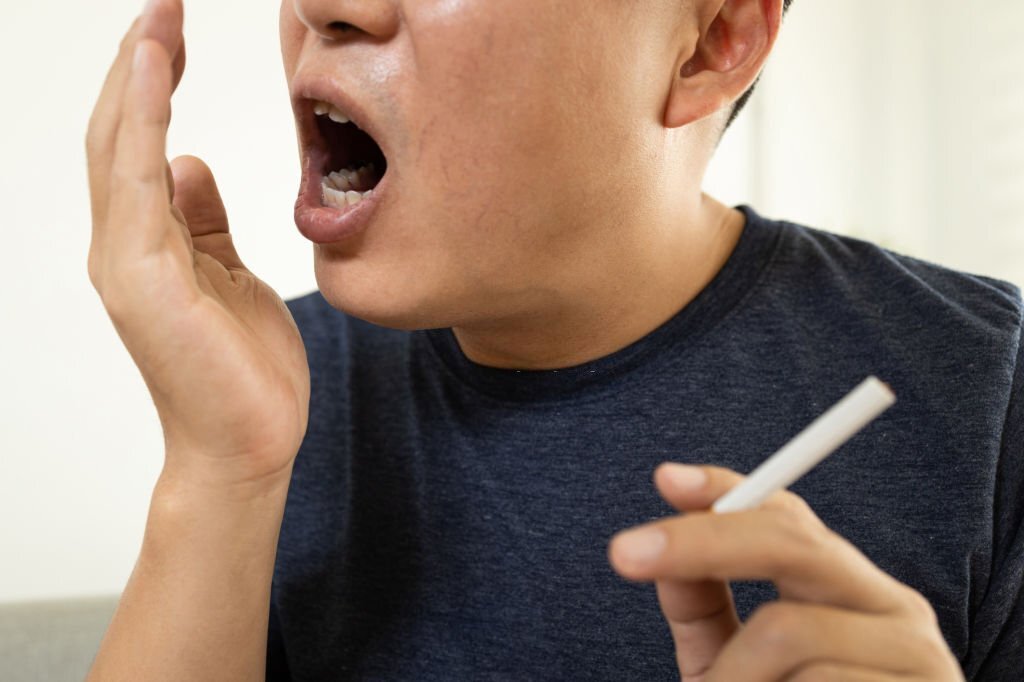Introduction:
Smoking has been linked to numerous health problems, including lung cancer, heart disease, and respiratory issues. However, the detrimental effects of smoking extend beyond the respiratory system and can significantly impact oral health as well. Tobacco products contain harmful chemicals that can lead to various oral health issues, affecting the teeth, gums, and overall oral cavity. In this blog post, we will delve into the relationship between smoking and oral health, understand the impact of smoking on different aspects of oral health, discuss common oral health problems associated with smoking, and provide practical tips for quitting smoking to improve oral health and overall well-being.
The Chemicals in Tobacco and Their Effects on Oral Health:
Tobacco smoke contains more than 7,000 chemicals, many of which are toxic and carcinogenic. When smoke is inhaled or comes into contact with the oral cavity, these harmful chemicals can cause damage and contribute to various oral health problems.
Nicotine:
Nicotine is the addictive component of tobacco that keeps individuals hooked on smoking. Nicotine constricts blood vessels, reducing blood flow to the gums, which can lead to impaired gum tissue healing and increased susceptibility to infections.
Tar:
Tar is a sticky substance found in tobacco smoke that can adhere to teeth, causing discoloration and staining. Tar can also lead to the formation of dental plaque, increasing the risk of tooth decay and gum disease.
Carbon Monoxide:
Carbon monoxide is a poisonous gas present in tobacco smoke that displaces oxygen in the blood. Reduced oxygen levels in the bloodstream can negatively affect gum health and delay healing processes.

Impact of Smoking on Oral Health:
Gum Disease (Periodontal Disease):
Smoking is one of the most significant risk factors for gum disease. Gum disease, also known as periodontal disease, is an inflammatory condition that affects the gums and supporting structures of the teeth. Smoking weakens the immune system and reduces blood flow to the gums, making it harder for the body to fight off infections. As a result, smokers are more likely to develop gum disease and experience more severe cases compared to non-smokers. Advanced gum disease can lead to gum recession, tooth loss, and even systemic health issues.
Tooth Discoloration:
Tar and other chemicals in tobacco smoke can cause yellow or brown stains on the teeth. Smokers often experience unsightly tooth discoloration, which can be challenging to remove with regular brushing alone. Teeth whitening treatments may be less effective for smokers due to the deep stains caused by smoking.
Bad Breath (Halitosis):
Smoking contributes to bad breath or halitosis. The chemicals in tobacco smoke linger in the mouth and respiratory system, leading to foul-smelling breath that is difficult to mask.
Delayed Healing:
Smoking can slow down the body’s natural healing processes, including those related to oral health. After dental procedures like extractions or oral surgeries, smokers may experience delayed healing, increased pain, and a higher risk of complications.
Oral Cancer:
Smoking is a significant risk factor for oral cancer, including cancers of the lips, tongue, cheeks, and throat. The carcinogens in tobacco smoke can damage the cells lining the oral cavity, leading to the development of cancerous growths.
Reduced Sense of Taste and Smell:
Smoking can impair taste buds and the sense of smell over time, affecting the enjoyment of food and diminishing the ability to detect potential dangers like spoiled or contaminated food.
Practical Tips for Quitting Smoking:
Quitting smoking is one of the most impactful decisions individuals can make to improve their oral health and overall well-being. Here are some practical tips to help you quit smoking:
Set a Quit Date:
Choose a specific date to quit smoking and stick to it. Having a defined target can help you mentally prepare for the change.
Seek Support:
Share your decision to quit smoking with friends, family, or support groups. Having a strong support system can provide encouragement and understanding during the challenging journey of quitting.
Replace the Habit:
Find alternative activities to replace smoking, such as chewing sugar-free gum, taking short walks, or engaging in hobbies.
Avoid Triggers:
Identify triggers that lead to smoking and try to avoid them. If you associate smoking with certain activities or locations, find new ways to approach those situations.
Nicotine Replacement Therapy:
Consider using nicotine replacement therapies like nicotine patches, gum, or lozenges to gradually reduce nicotine dependence.
Behavioral Therapy:
Seek professional help or join behavioral therapy programs that focus on changing habits and coping with triggers.
Stay Positive:
Acknowledge that quitting smoking is a challenging process, and be kind to yourself during setbacks. Stay positive and focus on the benefits of quitting for your oral health and overall health.
Conclusion:
Smoking has severe consequences on oral health, ranging from gum disease and tooth discoloration to oral cancer. The harmful chemicals in tobacco smoke can damage oral tissues, impair the immune system, and hinder the body’s natural healing processes. Quitting smoking is an essential step in improving oral health and overall well-being. By breaking free from the grip of tobacco addiction, individuals can significantly reduce the risk of oral health problems, enhance their sense of taste and smell, and lower the chances of developing serious systemic health issues associated with smoking. If you or someone you know is struggling with smoking cessation, seek professional help and remember that quitting is a journey worth taking for a healthier and brighter future.


